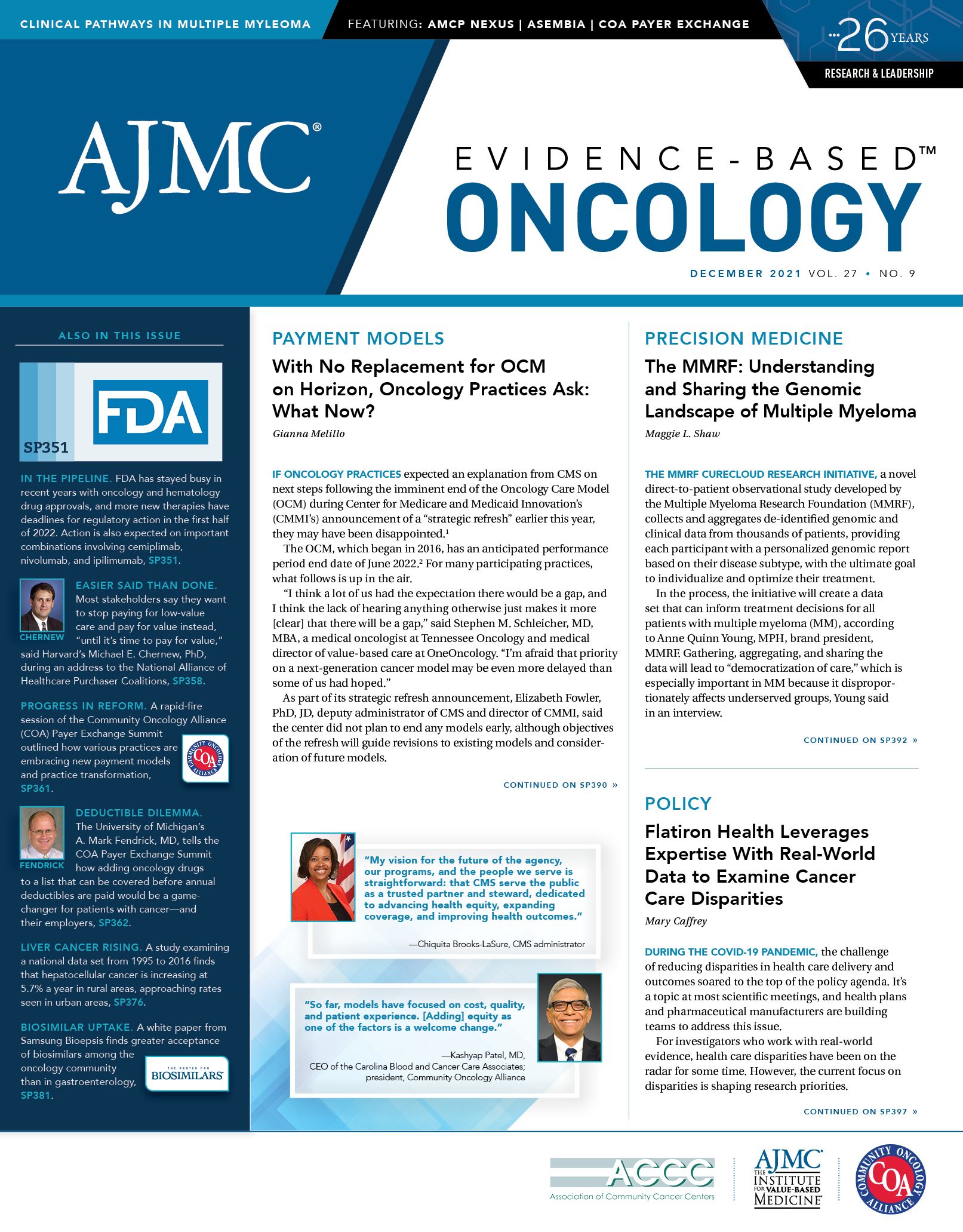Publication
Article
Evidence-Based Oncology
FROM THE EDITOR-IN-CHIEF: Objects in Motion
Author(s):
Truth is ever to be found in simplicity, and not in the multiplicity and confusion of things.
As a high school student, I learned 2 important things in my physics class: the first was that I was never going to be a physicist, and the second was the idea that objects in motion and at rest were governed by a set of simple and
defi nable rules. Sir Isaac Newton’s characterization of the universe was compelling.
The idea that there was an inherent simplicity to the motion of bodies great and small, and that this was knowable within a defi ned set of rules was
comforting. This mindset was not limited to my physics class. Physicians and teachers throughout my years of medical school and residency referenced the Gordian knot as an ideal cognitive approach toward identifying the inherent simplicity in the most complex situations. Yet, the discovery of a more wonderous set of insights regarding movement, light, matter, and time that came with the advent of quantum mechanics and relativity revealed that the world was really built upon multiplicity and confusion rather than simplicity.
In cancer care, as in physics, we need to avoid the trap of false simplicity when facing a reality that can be wondrous, fascinatingly complex, and confusing to the best of us.
The breadth of basic and clinical research performed in the domain of malignant diseases over the past 40 years have opened our minds to revelatory insights regarding cancer biology, patient clinical risk segmentation, neoantigen targets for therapeutic development, and avenues for immunological disruption of cancer cell survival. Millions are alive today thanks to the rapid evolution in state-of-the-art cancer care. Therapies developed from the insights gleaned through genomic testing of tumor samples has led in the past 2 years to the most rapid decline in cancer mortality ever achieved.
In this edition of Evidence-Based Oncology™, we take a pause at the end of this year, to examine the state of our progress and to look toward an increasingly complex future in cancer care.
As we move toward 2022 and beyond, the rich pipeline of candidate anticancer therapeutics and the relentlessly accelerating pace of innovation portends a future in which the prospects for patients and families who are aff ected by a cancer journey grow brighter. Yet, research and innovation are not enough. A cancer journey is a human process, not a technological one. There is a tendency in health care to try to reverse-engineer care around the dollar, rather than re-engineer care around the needs of patients and families. As a result, disparities in care access and survival outcomes persist. The tendency in policy making and payment model development to conflate cancer care with other easily commodifi able care services leads to deficient policies and unsustainable payment models. We need to grow past these barriers to care and develop more robust, patient-centered systems for ensuring equitable access to optimal cancer care for each and every patient.
In the pursuit of achieving better, more equitable cancer care, we may experience increasing tensions among those who make policy, those who
pay for health care, and those who deliver care. These creative tensions are a necessary part of growing beyond the present. The best model for delivering and paying for optimal care to cancer patients has yet to be invented. To create that system, the diverse set of cancer care stakeholders must embrace the full complexity of the creative journey, while remaining cognizant of the urgency in getting this right.
From the editors and staff of Evidence-Based Oncology™, I wish you and your families a happy, safe, and healthy holiday season. May the peace of the season and the hopefulness of a new year move us closer toward the ideal of greater health and wellness for all.






